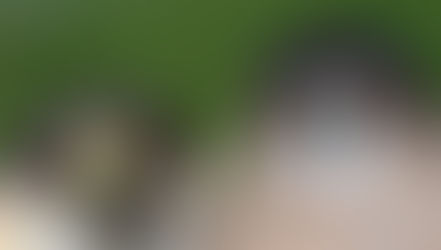How do I attract Blue Jays to my yard?
- Zach (Head Flocker)
- Sep 30, 2024
- 4 min read
Great question. And luckily, we have an easy answer for you. Read on friends, fiends, and others... but also subscribe to receive our site notifications and newsletters!

If you love Blue Jays and want to learn more about them, you are in the right spot, my friend. Keep reading.
An early ornithologist described the Blue Jay as such:
is distinguished as a kind of beau among feathered tenants of our woods, by the brilliancy of his dress; and like most other coxcombs, makes himself still more conspicuous by his loquacity, and the oddness of his tones and gestures.
-Alexander Wilson, 1831
The Blue Jay is a highly desired backyard feeder bird. Its distinct sound, behaviors, and bright blue plumage make it a real treat! What many backyard birdwatchers may not realize is the taxonomic location of the Blue Jay. Jays, in fact, are corvids, making them closely related to crows and ravens!
Attracting a Blue Jay is not difficult. To work this problem out, let's answer five important questions:
Where do Blue Jays Live?
Blue Jays are a resident species of the forests of eastern North America. In the last 50 years, Blue Jays have expanded far beyond their original range. Check out the Blue Jay range map and range expansion graphic below. Basically, if you live east of the Rocky Mountains, you can have Blue Jays in your area in the appropriate habitat.
Blue Jay Range Map

Expansion of the Blue Jay Population & Range
What habitat do Blue Jays live in?
Blue Jays are a forest corvid. They are traditionally found in mixed forests and woodlands, but they are also frequenters of residential areas with plenty of mature deciduous trees. It was likely the "arborization" of the Great Plains that helped the Blue Jay to expand into the Rocky Mountains.
Attracting Blue Jays to your yard will require the kind of mature tree coverage that Blue Jays prefer. Without an ample number of mature trees in your area, you may struggle to regularly attract Blue Jays.
What is the best bird food for attracting Blue Jays?
Generally, black oil sunflower seeds are a favorite food for multiple species of birds. However, there is a bird food option that drives Blue Jays nuts, literally! Blue Jays LOVE peanuts, especially those still in the shell. Black oil sunflower seed may lure Blue Jays in, but whole peanuts will ensure that your Blue Jays stick around and may even encourage them to bring their family units along. Make sure to purchase unsalted peanuts.
Why don't more birdwatchers use peanuts? Cost. The cost of a few pounds of whole peanuts is enough to make your wallet pucker. If you buy shelled peanuts, you won't be paying for the husk weightage, but the smaller pieces can disappear very quickly. You have to weigh your options and how you want to provide the nuts to the Blue Jays.
As an Amazon Associate, we earn from qualifying purchases.
Links may lead to affiliate sites.
Kaytee In Shell Peanuts - 10 lbs
Winfield Farm In Shell Peanuts - 25 lbs
Which bird feeder is best for Blue Jays?
If you stick to good ol' black oil sunflower seed, a platform feeder is the best option. Blue Jays are too large for smaller feeders like tube feeders and house feeders. They need the space to land and eat comfortably. If you decide to devote the budget to purchasing peanuts, there are cage feeders specifically for holding in-shell peanuts. These cages encourage the Blue Jays to use their intellect to remove the peanut. It creates a fun viewing opportunity for Blue Jay lovers!
Peanut Wreath Bird Feeder
How to provide clean water for Blue Jays?
One of the best ways to attract any bird is to provide a source of fresh water. We all are not lucky enough to have streams and creeks running through our backyards, so we must create our own water source. For birds, a shallow pool with some movement is ideal. A normal birdbath with a bubbler helps, as the water does not sit stagnantly. If a full birdbath is not for you, a shallow basin with a slow drip is a GREAT option. Your budget and aesthetic desire will guide your decision. However, be warned, plastic birdbaths with pumps are rarely a lasting solution. My preference is for a stone basin with a dripper.
Here are some potential solutions from Amazon. The dripper is my go-to for a refined look, but a simple hose or large jug is more than functional:
Why is that Blue Jay bald?

The shock and concern so many people experience the first time they see a bald Blue Jay is understandable. Imagine you were waiting for Elvis to come out on stage, and when he did, his iconic pompadour was replaced with a hair island amidst a sea of open scalp. Luckily, this is not male-patterned baldness these jays are experiencing. It is part of their annual life cycle, called molt (or moult). During molt, old feathers are shed, and new feathers are grown in. Often, it can leave birds looking like their prehistoric cousins, the dinosaurs. It is nothing to be alarmed about, and it makes for a great photo.
An oasis for the jays!
Blue Jays are one of the easier birds to lure into your backyard entertainment center (bird feeders). Make sure you live in the range, add some peanuts, and have a few tall trees, and your yard will be filled with the constant yanking, cranking, and fluting sounds from Blue Jays.
Now, quit reading this junk and get to feeding some Blue Jays!
Want more tips on birds, feeding birds, identifying birds, wildlife safety, and more?? Join our site, subscribe to our Flocking YouTube, like us on Facebook, follow us on Instagram and Twitter, and visit our Amazon Storefront.

















